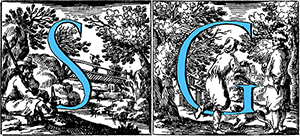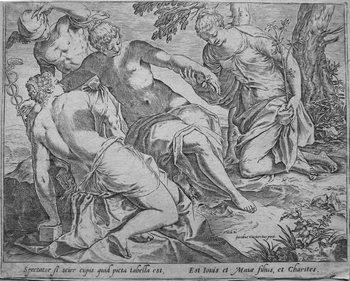
CARRACCI Agostino
(Bologna 1557 – Parma 1602)
Italian painter and engraver son of Antonio, a tailor born in Cremona who was transferred at young age to Bologna. Agostino was the older brother of Annibale and cousin of Ludovico, who were also painters and engravers. Already at the age of ten he had learnt the use of burin at the workshop of a goldsmith. Later, he attended the studio of Prospero Fontana, then the Bartolomeo Passarotti’s and finally the workshop of the painter, draftsman and architect Domenico Tibaldi.
In this latter he had the possibility to copy the works of Cornelis Cort (famous dutch engraver) by assimilating his sophisticated technique and innovative style. Engraving translator, soon he extended his works to the models of great italian artists: Michelangelo, Tintoretto, Federico Barocci, Veronese and Correggio.
After traveling for study to Venice and Parma he returned to Bologna where he collaborated with Annibale and Ludovico to the frescoes with the ‘Stories of Giasone and Medea’ in Palazzo Fava. In 1582 Agostino and Annibale Carracci founded the Academy of the Incamminati, one of the first Art Academy in Italy, with the aim of providing students with complete theoretical and practical training in art. In the Academy, young artists could paint nude models, forbidden by the Church, in the spirit of Counter-Reformation.
In 1594, at the request of Cardinal Odoardo Farnese, he went to Rome together with Annibale to perform the frescoes of Palazzo Farnese, painting the vault with the scenes’ Teti and Peleo’ and ‘Aurora and Cefalo’.
Although he was the author of a valuable pictorial activity mainly with paintings of sacred and mythological subjects, his fame is due mainly to his engravings in which he perfected the technique and developed an ‘Academic style’ that influenced all the engraving art until the 20th century. In 1600 Agostino was called to Parma by Duke Ranuccio I Farnese with the task of decorating the vault of the great room in the Garden Palace. Agostino completed the central fresco, but only three lateral depictions of the four planned, since in February 1602 he died premature at the age of 45.





